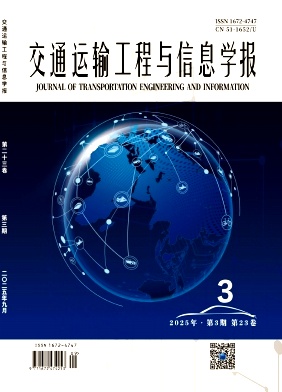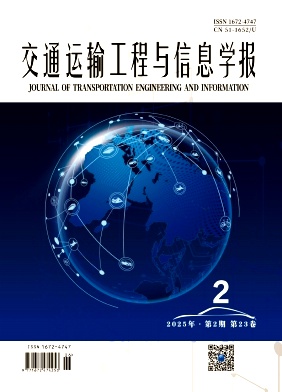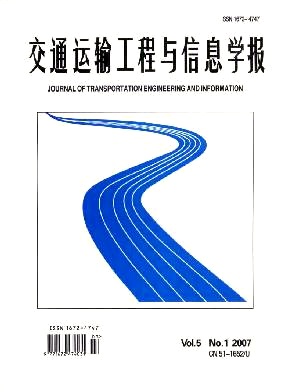Bulletin Board
Highlights
Low-altitude trajectory planning for aircraft considering RAIM availability undercomplex terrain conditions, TANG Xinmin, et al.
2025-08-12 TopAnalysis of low altitude flyable airspace in major cities in china, JIN Sheng, et al.
2025-07-29 TopLand-air integrated transportation: research opportunities for the low-altitudeeconomy from the perspective of road transportation, TANG Li.
more..Low-altitude airspace operations safety assurance technologies: a technological review
CAI Ming;MA Chuanqi;ZHU Huasa;ZHONG Cheng;LIANG Yan;WAN Wei;[Background] The large-scale development of the low-altitude economy is intensifying low-altitude flight activities, creating a heightened demand for low-altitude operational safety assurance. [Objective] This review investigates the advancements in low-altitude security assurance technologies by systematically summarizing relevant studies from multiple perspectives. [Methods] The current state of research is reviewed domestically and internationally from four key aspects: communication and sensing, airspace route planning, operational control, and flight supervision. Subsequently,challenges in complex and dynamic low-altitude environments are analyzed, with recommendations to improve safety in aviation operations proposed. [Results] Research on low-altitude operational safetyassurance technology is nascent. Key issues include an underdeveloped safety-assurance system, inadequate adaptability to complex scenarios, and a lack of practical testing and validation. To meet the safety and sustainability goals for low-altitude flight activities, enhancements are needed in communication and sensing reliability, airspace and route optimization, operational control efficiency, and comprehensive real-time flight monitoring. [Application] This review provides insights and guidance for the ongoing development and application of low-altitude operational safety assurance technologies.
Land-air integrated transportation: research opportunities for the low-altitude economy from the perspective of road transportation
TANG Li;[Background] The development of the low-altitude economy has become a firm national commitment and long-term strategic priority. Major countries and regions worldwide are closely monitoring policies and technological advances in this domain. Specific“ground + low-altitude”scenarios give rise to a series of novel research questions, drive related technological progress, and have spawned a new research area: land-air integrated transportation. [Objectives] Standing from the perspective of road transportation, this paper aims to inspire researchers—particularly those with a background in traffic and transportation engineering—to explore potential research directions within the field of land-air integrated transportation, thereby advancing both theoretical research and practical engineering applications. [Methods] In accordance with the logical progression of“fundamental concepts-research examples-challenge analysis”, this paper outlines and illustrates the research value and typical research directions of land-air integrated transportation seeing from the aspect of road transportation. The research challenges in this field are then discussed. [Results] With the booming of low-altitude economy, land-air integrated transportation remains an emerging research frontier whose scope and boundaries warrant further exploration. Several relatively well-defined research directions have already begun to crystallize, including: airspace structure delineation; plan planning for air-ground vehicles; planning and selecting the locations of take-off and landing facilities; collaborative management and operational optimization of air-ground traffic flows; safety and risk management for land-air transportation systems; and public acceptance of low-altitude operations. Concurrently, we identify key challenges for researchers in this field: distinguishing and addressing both common and domain-specific issues; identifying“real scenarios”and“real problems”; managing the“complexity explosion”inherent in integrated systems; and assessing the long-term impacts of public trust and environmental sustainability on low-altitude economic policies.
A review of optimization methods for low-altitude aircraft operations
FAN Wenbo;XIAO Jie;WU Yikai;ZHANG Yimeng;YANG Chenjie;GAN Mi;LIU Xiaobo;[Background] As an emerging strategic industry, the low-altitude economy leverages unmanned aerial vehicle(UAVs) technologies to revolutionize traditional transportation and logistics sectors. However, the large-scale implementation of UAVs faces optimization-related challenges from multiple aspects, including limited airspace resources, complex operational scheduling, and difficulties in spatiotemporal resource coordination, which urgently call for systematic Modeling modeling and efficient algorithms as support. [Objective] This review systematically synthesizes research ad-vances in optimization methods for UAV operations within the low-altitude economy, clarifying key scientific problems, modeling techniques, and future research directions. [Methods] We provide an overview of the optimization issues for low-altitude aircraft UAV operations across three levels: strategic level(infrastructure site selection, airway network optimization), tactical level(path optimization, collaborative path optimization), and operational level(re-al-time route planning,multi-traffic entity coordination mechanisms, low-altitude vehicle dispatch). We conduct a comparative analysis of representative optimization models and methodologies employed at each level.[Conclusions] It is found that current research has achieved significant progress in air route network design and multi-objective cooperative optimization, yet persistent challenges remain in addressing dynamic environments, uncertainties, and multi-agent coordination. [Application] This review provides a systematic reference for subsequent research on the optimization of UAV operations.
Analysis of low altitude flyable airspace in major cities in China
GUO Wentong;LI Xiangyu;JIN Wenyan;CHEN Mengwei;JIN Sheng;[Background] The refined management of airspace resources has a significant impact on the development of the low-altitude economy. The assessment of low-altitude airspace airworthiness is a key prerequisite for low-altitude airspace management, but the mechanism by which it is influenced by the built environment on the ground has not yet been systematically analysed. [Objective]Assess the airworthiness and spatial developability of low-altitude airspace in cities, and reveal the mechanisms by which the built environment on the ground affects it. [Methods] Based on multisource geospatial data, a low-altitude airworthiness identification framework was constructed that includes the delineation of no-fly buffer zones, spatial aggregation analysis(global/local Moran's index), and regression analysis of influencing factors(OLS). [Data] Fifty-five cities in China were selected, and multi-source data such as GHS-UCDB-2024, OpenStreetMap/Amap POI, and 3D-GloBFP building heights were integrated for analysis using a 1 km hexagonal grid as the unit. [Results]The proportion of airspace suitable for flight in cities ranges from 54.17% to 99.82%, showing spatial differentiation with“core cities being restricted and non-core cities being relaxed”and a significant positive correlation. The natural obstacle ratio, urban compactness, and urban area are positively correlated with the proportion of airspace suitable for flight, while the proportion of low-altitude risk facility areas is negatively correlated. The spatial agglomeration layout of functional zones has a stronger constraining effect on flight suitability than their size.
Locating urban flying car vertiports part Ⅰ: a multi-objective optimization method based on bi-level programming
SHEN Yan;LU Kai;YIN Haodong;SUN Huijun;[Background] As a paradigm-shifting innovation within the realm of future transportation,flying cars have emerged as a pivotal solution to urban traffic congestion and mobility challenges. Nevertheless, the current infrastructure for such vehicles, including the suboptimal locations of vertiports and sluggish construction timelines, has thus far hindered the technology's ability to fulfill a wide spectrum of service requirements. [Objective] This study aims to enhance the strategic distribution of vertiports for flying cars in an urban setting. By doing so, it aims to mitigate operational expenses and ground-level passenger safety risks associated with flying car operations, while concurrently boosting passenger travel efficiency. The overarching objective is to harmonize the operational costs, passenger risk, and quality of service to achieve an optimal balance. [Methods] The research introduces a bi-level programming framework using multi-objective optimization to determine optimal vertiport locations. The upper level utilizes a 0-1 integer programming approach to minimize operational costs and potential passenger injury risks. Conversely, the lower level incorporates the variability in passenger route choice behavior into a multimodal network user equilibrium assignment model that integrates unmanned shuttles with flying cars. To address this complex model, a heuristic solution algorithm based on tabu search and Frank-Wolfe algorithms was designed. [Data] To validate the proposed model and algorithm, the research leverages publicly accessible Sioux Falls network data along with origin-destination(OD) demand matrices. By varying the number of vertiports and adjusting the weight ratios of the different objectives, numerous scenarios were constructed to assess the efficacy of the developed approaches. [Results] The findings from numerical experiments reveal that the location strategies derived from this method, when compared to conventional approaches, may incur a marginal increase in aggregate operating costs. Although there is a slight increase in flight-related risks, there is a considerably greater reduction in the overall operating costs, making it a more reasonable approach.

Journal Information
Founded in 2003, Quarterly
Competent Authority:Ministry of Education of PRC
Sponsor:Southwest Jiaotong University
Editor in Chief: LIU Xiaobo; HE Zhengbing
E-mail:jtt@swjtu.edu.cn
ISSN :1672-4747
CN :51-1652/U
Impact Factor: 3.245
Category Ranking: 7/169
Quartile: Q1
Indexed
CSTPCD
Scopus
RCCSE
JST
CSTJ
CNKI
COJ
Tracking the information about your manuscript
Communicate with the editorial office
Query manuscript payment status Peer ReviewCollecting, editing, reviewing and other affairs offices
Managing manuscripts
Managing author information and external review Expert Information Office WorkOnline Review
Online Communication with the Editorial Department
























































































